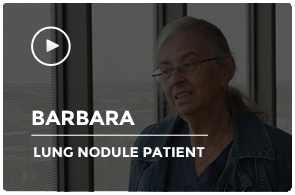Interstitial lung disease is a classification covering more than 200 types of lung disorders, all of which affect the interstitium, or the area surrounding the air sacs. Most of the disorders cause a thickening of the interstitium, generally resulting from excess mucous, inflammation, and scarring. The progressive scarring of lung tissue eventually interferes with the ability to breathe by reducing the intake of oxygen. Some of the disorders also may affect blood vessels, airways to the lungs, the outside lining of the lungs (called the pleura), and even the air sacs themselves. A wide range of causes are associated with these lung disorders, including bacteria, smoking, asbestos, and autoimmune conditions such as rheumatoid arthritis.
UAB Pulmonary Services is ranked among the best programs of its kind in the nation, and our physicians are consistently listed among the Best Doctors in America for respiratory disease. We serve patients at our main campus and also at our convenient neighborhood clinics in Hoover and Gardendale.
Most UAB Pulmonary Services doctors are triple-board-certified in internal medicine, critical care, and pulmonary medicine. They serve on national boards and specialty organizations, speak at national conferences, publish in scientific and medical journals, and conduct research that is recognized nationally and internationally. Our physicians are continually seeking new ways to treat lung disease and improve the care for patients.
Videos
Resources
- Pulmonary Fibrosis/Interstitial Lung Disease
- Division of Pulmonary, Allergy and Critical Care Medicine
Related Specialties
Clinical Trials
Speak to your physician about your options and browse the link below for more information
Latest News
View All News-
Allergies attacking? Avoid the pollen panic this spring with these tips
March 27, 2025
-
UAB Lung Health Center to target youth smoking and vaping with annual award from the ADPH
November 18, 2024
-
UAB to conduct NIH-funded research on the health impacts of public housing and neighborhood revitalization
November 12, 2024
-
Reduced sialylation of mucin impairs mucus transport in lungs
September 24, 2024
-
Hope restored: Georgia woman receives heart-double lung transplant thanks to organ donation, family
September 20, 2024




